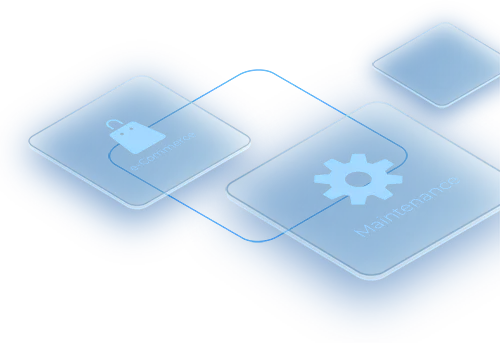
Streamline Your Operations: How Inventory Management Software Can Boost Efficiency

Streamline Your Operations: How Inventory Management Software Can Boost Efficiency
Effective management of inventory is an essential component in the smooth operation of any thriving business, irrespective of its size or industry.
It involves monitoring and controlling the flow of goods from procurement to storage, and ultimately to customer delivery.
With the advancements in technology, organizations now have access to inventory management systems that can greatly simplify and optimize these processes.
In this blog post, we will explore the benefits of using an inventory management system to boost efficiency, how it can streamline operations, common challenges faced, and how this software can help overcome those challenges.
Content Index
- Benefits of Using Inventory Management Software
- How Inventory Management Software Can Streamline Operations
- Common Challenges and How Inventory Management Software Can Help Overcome Them
- The Transformative Impact of Inventory Management Software

Benefits of Using Inventory Management Software
Inventory management software plays a crucial role in transforming how businesses manage their stock.
There are numerous advantages of utilizing inventory management software to boost the efficiency of your business.
Some of them include:
Improved Accuracy
One of the primary advantages of employing inventory management software is the significant improvement in accuracy.
Manual methods are prone to errors like data entry mistakes, misplaced items, or discrepancies in stock levels.
With an automated system in place, such errors are minimized, ensuring that your inventory data remains accurate and up to date.
This accuracy translates into better decision-making and avoids costly mistakes caused by inaccurate information.
Time and Cost Savings
Implementing an inventory management system leads to substantial time and cost savings.
Automated tracking of inventory levels, reorder points, and supplier information streamlines the procurement process.
This automation reduces the time spent on manual tasks such as counting stock or reconciling discrepancies, allowing your team to focus on more strategic activities.
Additionally, by optimizing stock levels and reducing instances of overstock or stockouts, you save on storage costs and minimize lost sales opportunities.
Enhanced Decision-Making
Inventory management software provides valuable insights into your inventory operations.
Through detailed reports and analytics, you gain visibility into trends, demand patterns, and inventory turnover rates.
This data empowers you to make informed decisions regarding stock replenishment, pricing strategies, and inventory allocation.
By having real-time access to actionable information, you can adapt quickly to market changes and optimize your inventory management strategies for better outcomes.
Streamlined Operations
Efficient inventory management software integrates seamlessly with other business systems such as accounting, sales, and supply chain management.
This integration eliminates silos and enables data synchronization across departments.
As a result, workflows are streamlined, and communication between teams improves.
From order processing to fulfillment, each step in the supply chain becomes more efficient and transparent, leading to smoother operations and reduced lead times.
Scalability
As your business grows, so do your inventory management needs.
Inventory management software is scalable, meaning it can accommodate increasing volumes of products, transactions, and warehouses without compromising performance.
Whether you operate a small startup or a large enterprise, a scalable system ensures that your inventory processes remain efficient and adaptable to changing business demands.
Improved Customer Satisfaction
Efficient inventory management directly impacts customer satisfaction. With accurate stock information and faster order processing, you can fulfill customer orders promptly and accurately.
This reduces delivery times, minimizes backorders, and enhances the overall customer experience.
Happy customers are more likely to become repeat buyers and recommend your business to others, driving growth and profitability.
How Inventory Management Software Can Streamline Operations
Inventory management software provides a variety of features designed to streamline operations and enhance overall performance.
Let’s check out how this software can transform your operations and drive your business forward.
Automated Inventory Tracking
One of the key advantages of using inventory management software is automated inventory tracking.
This feature allows businesses to keep real-time tabs on their stock levels, reducing the risk of stockouts or overstocking.
By automating the tracking process, businesses can accurately forecast demand, identify slow-moving items, and make data-driven decisions to optimize their inventory levels.
This level of automation not only saves time but also minimizes human error, ensuring inventory records are always up to date.
Implementing an inventory management system to boost efficiency can revolutionize how businesses handle their inventory, leading to improved accuracy, reduced costs, and enhanced customer satisfaction.
Efficient Order Fulfillment
Another area where inventory management software excels is in order fulfillment.
By integrating with sales channels and automating order processing, businesses can fulfill orders faster and more accurately.
The software can prioritize orders based on various factors such as urgency, location, and available stock, ensuring that orders are processed and shipped on time.
Additionally, inventory management software can generate pick lists, packing slips, and shipping labels automatically, streamlining the entire fulfillment process.
This not only saves time for employees but also reduces the chances of errors that can occur during manual order processing.
Optimized Replenishment
Inventory management software also plays a crucial role in optimizing replenishment strategies.
The software utilizes historical data, sales trends, and lead times to recommend the best reorder points and quantities for every product.
This proactive approach to replenishment helps businesses avoid stockouts and excess inventory, leading to improved cash flow and reduced carrying costs.
Moreover, inventory management software can automate purchase orders, sending them to suppliers based on preset criteria such as stock levels and reorder points.
This automation eliminates the need for manual intervention, ensuring that replenishment processes are efficient and accurate.
Centralized Data Management
A centralized data management system is another advantage of using inventory management software.
Instead of scattered spreadsheets or manual records, businesses can consolidate all their inventory data into a single, easy-to-access platform.
This centralization allows for better visibility into inventory levels, transactions, and performance metrics.
The inventory management system can also generate comprehensive reports and analytics, providing valuable insights into inventory turnover, carrying costs, and profitability.
These insights empower businesses to make informed decisions, optimize inventory strategies, and identify areas for improvement.
Warehouse Management
Inventory management software often includes robust warehouse management capabilities.
From inventory location tracking to cycle counting and barcode scanning, these features help streamline warehouse operations and improve overall efficiency.
By optimizing warehouse layouts, automating picking and packing processes, and reducing errors, businesses can enhance their operational performance and customer satisfaction
Implementing an inventory management system to boost efficiency can have a transformative impact on your business. It is a comprehensive solution for your business success.
Common Challenges and How Inventory Management Software Can Help Overcome Them
Efficient inventory management is crucial for businesses to stay competitive in today’s market.
However, numerous challenges often hinder smooth operations and profitability.
By implementing the inventory management system to boost efficiency, businesses can effectively address these challenges and optimize their inventory processes for improved profitability and streamlined operations.
Let’s find out some of the common challenges and how inventory management software can be the solution to overcoming them effectively.
Lack of Real-time Inventory Visibility
One of the most significant challenges businesses face is the lack of real-time visibility into their inventory.
This can lead to stockouts, overstocking, and inaccurate order fulfillment.
Inventory management software addresses this challenge by providing real-time updates on inventory levels, allowing businesses to make informed decisions promptly.
With instant access to inventory data, businesses can avoid stockouts, minimize excess inventory costs, and ensure timely order fulfillment.
Overstocking and Understocking
Overstocking and understocking are common issues that can impact a business’s bottom line.
Overstocking ties up capital and warehouse space, leading to increased carrying costs and the risk of obsolete inventory.
On the other hand, understocking results in lost sales and dissatisfied customers.
Inventory management software helps businesses optimize their inventory levels by providing accurate demand forecasting, reorder point alerts, and inventory optimization tools.
By maintaining optimal stock levels, businesses can reduce carrying costs, improve cash flow, and enhance customer satisfaction.
Redundant Manual Procedures
Manual inventory management processes are time-consuming, error-prone, and inefficient.
They often involve manual data entry, spreadsheets, and paperwork, leading to inaccuracies and delays.
Inventory management software automates repetitive tasks such as inventory tracking, order processing, and reporting, streamlining operations and reducing human errors.
By automating workflows, businesses can save time, improve accuracy, and focus on strategic activities that drive growth.
Recognizing and Tracking Obsolete Products
Obsolete inventory can tie up valuable resources and negatively impact profitability. However, identifying and tracking obsolete products manually can be challenging.
Inventory management software includes features such as inventory aging reports, automated alerts for slow-moving items, and inventory valuation tools.
These features help businesses identify obsolete products early, take corrective actions such as markdowns or promotions, and free up capital for more profitable investments.
Understanding Demand and Volatility
Demand for products can fluctuate due to seasonal trends, market conditions, or unforeseen events.
Businesses need to adapt quickly to changing demand patterns to avoid stockouts or excess inventory.
Inventory management software leverages advanced analytics, demand forecasting algorithms, and trend analysis to predict demand accurately.
By understanding demand patterns and volatility, businesses can optimize inventory levels, adjust procurement strategies, and respond effectively to market dynamics.
Lack of Integration with Sales Channels
Many businesses operate across multiple sales channels, including online stores, brick-and-mortar stores, and third-party marketplaces.
Managing inventory across these channels manually can lead to discrepancies, overselling, and fulfillment delays.
Inventory management software integrates seamlessly with various sales channels, synchronizing inventory data in real time and ensuring accurate stock levels across all channels.
By centralizing inventory management and sales operations, businesses can streamline order fulfillment, prevent stockouts, and deliver a seamless customer experience.
Handling Perishable and Fragile Stock
Businesses dealing with perishable or fragile inventory face unique challenges such as spoilage, damage, and expiration.
Effective inventory management is essential to minimize waste, preserve product quality, and meet regulatory compliance.
Inventory management software includes features tailored for handling perishable and fragile stock, such as batch tracking, expiration date management, and temperature monitoring.
By implementing best practices and using inventory management software, businesses can ensure the integrity of perishable and fragile inventory, reduce losses, and maintain customer satisfaction.
The Transformative Impact of Inventory Management Software
Inventory management software is a powerful tool that can change how your business handles its inventory.
It brings many benefits, like improved accuracy, saving time and money, helping you make better decisions, streamlined operations, scalability, and improved customer satisfaction.
By addressing common inventory management challenges such as lack of visibility, overstocking, manual procedures, etc., inventory management software empowers your business with the tools it needs to succeed.
As technology gets advanced, businesses need to use inventory management systems to boost efficiency, stay competitive, reduce costs, and meet customer expectations.
Working with experts like EBR can give your business the right inventory management software concerning your specific needs and objectives.
Read more related articles about inventory management software:
- Efficient Inventory Control With Inventory Management Software
- Key Features of Effective Inventory Management Software
- How to Find the Best Inventory Management Software
- Guide to Choosing the Right Inventory Management Software
Let's Connect!
Are you currently exploring software solutions for your business? 🤔
Great! What’s the single biggest challenge you’d like a software solution to solve for your business? 🎯
💡 Suggested Solution Ideas:
Just one more step! Share your details so our experts can connect with you personally and discuss tailored solutions. 🤝
Thank You for Connecting! 🎉
We've received your information and a specialist will be in touch with you very shortly to discuss how we can help your business thrive.
In the meantime, feel free to browse our resources or reach out if you have immediate questions.
Understood! 🙏
No worries if you're not exploring software solutions right now. Our door is always open if your needs change!
Feel free to explore our other offerings or connect with us anytime.





